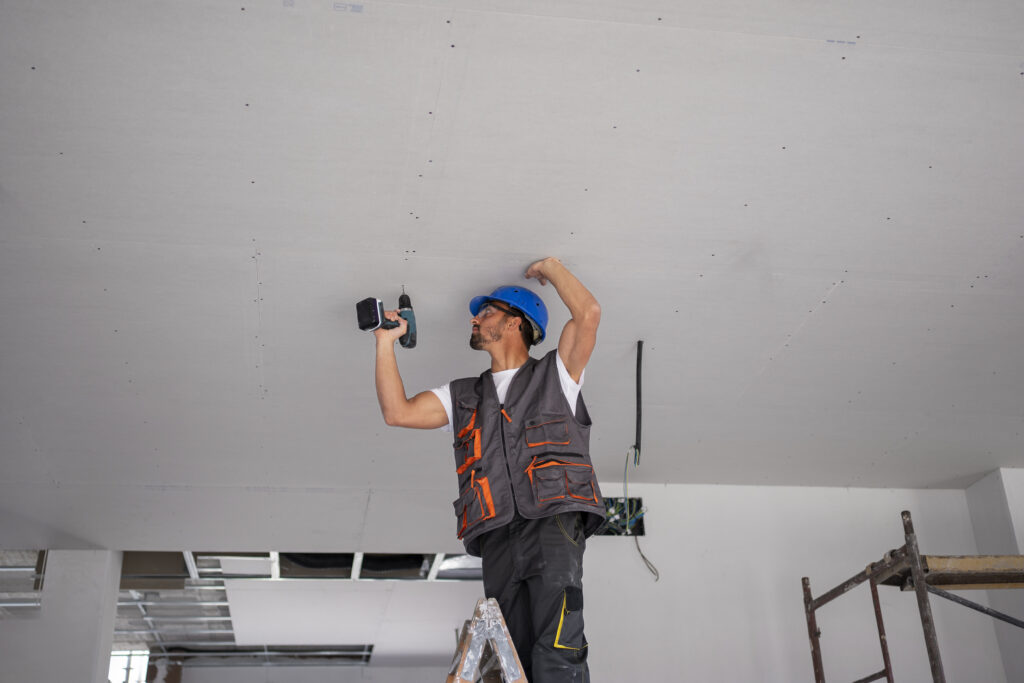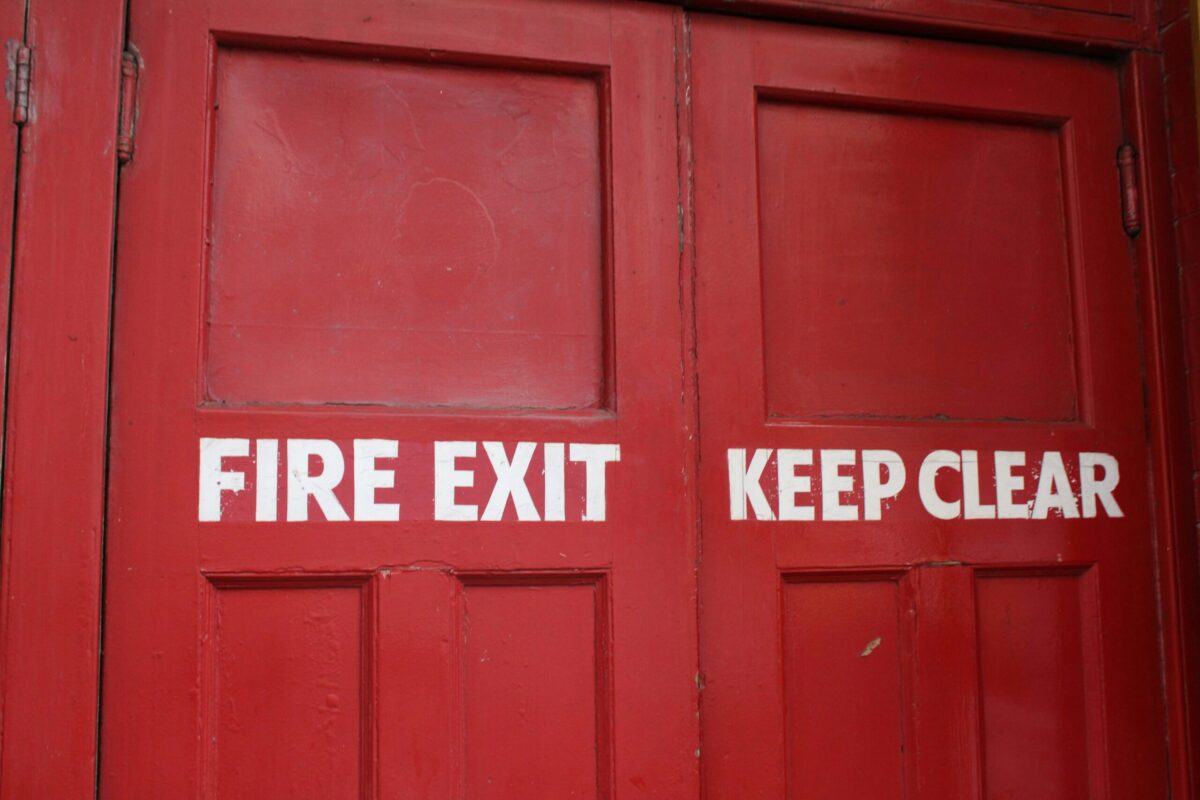Imagine you’re on the top floor of an apartment building when a fire breaks out in a unit down the hall. Scary stuff, right? Unlike in a single-family home, you can’t just dash to the front door or climb out a window to escape. You need to navigate several flights of stairs to reach safety. Time is of the essence.
That’s why proper fire mitigation is so important in multifamily buildings. And here at PDI Drywall, it’s a commitment we take seriously.
With 19 years of experience running a leading drywall company in North Carolina, I’ve honed my fire systems expertise and studied code in depth for multifamily construction projects. Drywall is a key component of fire mitigation in large-scale buildings. Our knowledge plays a crucial role in creating safer and more resilient structures.
What Are Fire-Rated Systems?
A fire-rated system is like a barrier that’s made to slow down the spread of fire in a building. It’s made up of specific plans and specialized materials that can resist fire for a certain amount of time, measured in hours.1
These systems include specialty drywall, doors, windows, caulk, and sealants that are designed and tested to withstand fire without spreading too quickly. They’re all about buying time in a fire, allowing people to evacuate safely while also reducing damage to the building.
There are hundreds, if not thousands, of different fire-rated systems. It’s easy for drywall companies to miss the mark, pricing projects solely by square footage without examining the details of the plans and required fire-rated systems. This oversight can cause costly delays in timelines and underestimated budgets.
Our expertise in multifamily construction means we have a keen eye for detail and a deep understanding of fire-rated systems. Being a licensed general contractor in North Carolina, I’m very familiar with building codes and what products and methods are needed. Because of this, we build impeccable structures that stick to deadlines, stay on budget, and, most importantly, prioritize safety above all else.
Up To Code
Fire-rated systems follow the rules of the International Building Code (IBC). The IBC sets forth minimum requirements for the design and construction of buildings to ensure public safety.2
The IBC protects buildings and their occupants from fires in two ways: active and passive fire resistance.
Active fire resistance refers to equipment that requires activation, like fire alarms and automatic sprinklers. Sprinklers play an important role during a fire emergency, but buildings cannot rely on them alone. Sprinkler systems are triggered by high temperatures, usually breaking a protective glass before releasing water.
Passive fire resistance, on the other hand, uses fire-resistant building materials and designs to contain or slow down the spread of fire, smoke, and heat. These systems are always ready to act, providing constant protection without needing activation. They’re essential for creating safe multi-family buildings, and drywall is a vital element.

The Role of Drywall in Fire Mitigation
Drywall is made of gypsum, a natural mineral that’s excellent at resisting fires. With 21% water content, gypsum acts as a barrier to heat by releasing steam when exposed to fire. This helps slow down the spread of heat and flames from one wall to the next.3
In multifamily buildings, like apartments, condos, and senior living facilities, drywall is essential for building fire-resistant walls and ceilings. Our knowledge of building codes and expertise in executing fire-rated systems can save many lives in densely populated buildings.
Fire-resistant barriers, such as firewalls, fire partitions, and smoke barriers, go by different names based on their official rating.4 To make these special walls, we use multiple layers of drywall with special fire-resistant core materials. For example, Type X gypsum board, used for walls, has glass fibers mixed in with the gypsum to reinforce the core of the panels.5
Navigating Fire-Rated Construction Challenges
Constructing fire-rated buildings is vital. Everyone deserves to live or work in a place they feel safe. That being said, building fire-rated systems comes with a list of challenges during the construction process, which is why hiring an experienced drywall company is so important. These challenges include:
- Complexity of Installation: Fire-rated systems need special materials, techniques, and attention to detail to achieve the right level of fire resistance. Installing fire-rated walls and ceilings demands careful coordination and expertise to meet building codes. Many drywall companies only consider square footage when creating budgets and timelines, failing to factor in the complexities of the plans and the reality of how long they will take to execute.
- Cost Considerations: Fire-rated materials often cost more than standard materials, increasing project expenses. Budget constraints require careful planning and efficient usage of time and materials.
- Schedule Impact: Installing fire-rated systems takes longer than regular projects. Obtaining fire-rated materials, along with inspections and coordination with other trades, can delay timelines significantly without proper planning.
- Code Compliance: Large-scale projects are complex, especially regarding safety codes. With varied codes and fire-rated systems, inexperienced drywall companies can cause real problems.
To tackle these challenges, effective communication, cooperation, and planning are a necessity. Efficiency is the cornerstone of PDI Drywall, even when dealing with the most complex projects.
We excel at transforming chaotic job sites into unified team environments, promoting collaboration within our teams and with other trades, contractors, and suppliers. Our approach ensures smooth communication and coordination for successful project execution.
When aiming to complete detailed designs within budget and tight deadlines, it’s crucial to partner with a seasoned company that ensures top-notch results. PDI Drywall stands out as an experienced company proficient in executing fire-rated systems.
References:
- https://www.nationalgypsum.com/who-we-are/blog/fire-resistance/5-questions-about-area-separation-walls#:~:text=The%20purpose%20of%20an%20area%20separation%20fire%20wall%20is%20to,wall%20with%20aluminum%20breakaway%20clips.
- https://www.iccsafe.org/building-safety-journal/bsj-technical/an-overview-of-fire-safety-within-the-international-building-code/#:~:text=The%20IBC%20is%20designed%20to,passive%20and%20active%20fire%20protection.
- https://www.certainteed.com/what-fire-rated-gypsum-board
- https://firebarrierexperts.com/top-3-types-of-fire-barriers/
- https://www.usg.com/content/usgcom/en/blog/type-x-vs-type-c-wallboard.html#:~:text=In%20Type%20X%20board%2C%20special,physical%20integrity%20under%20fire%20conditions.
Photos: www.freepik.com


Write a Comment